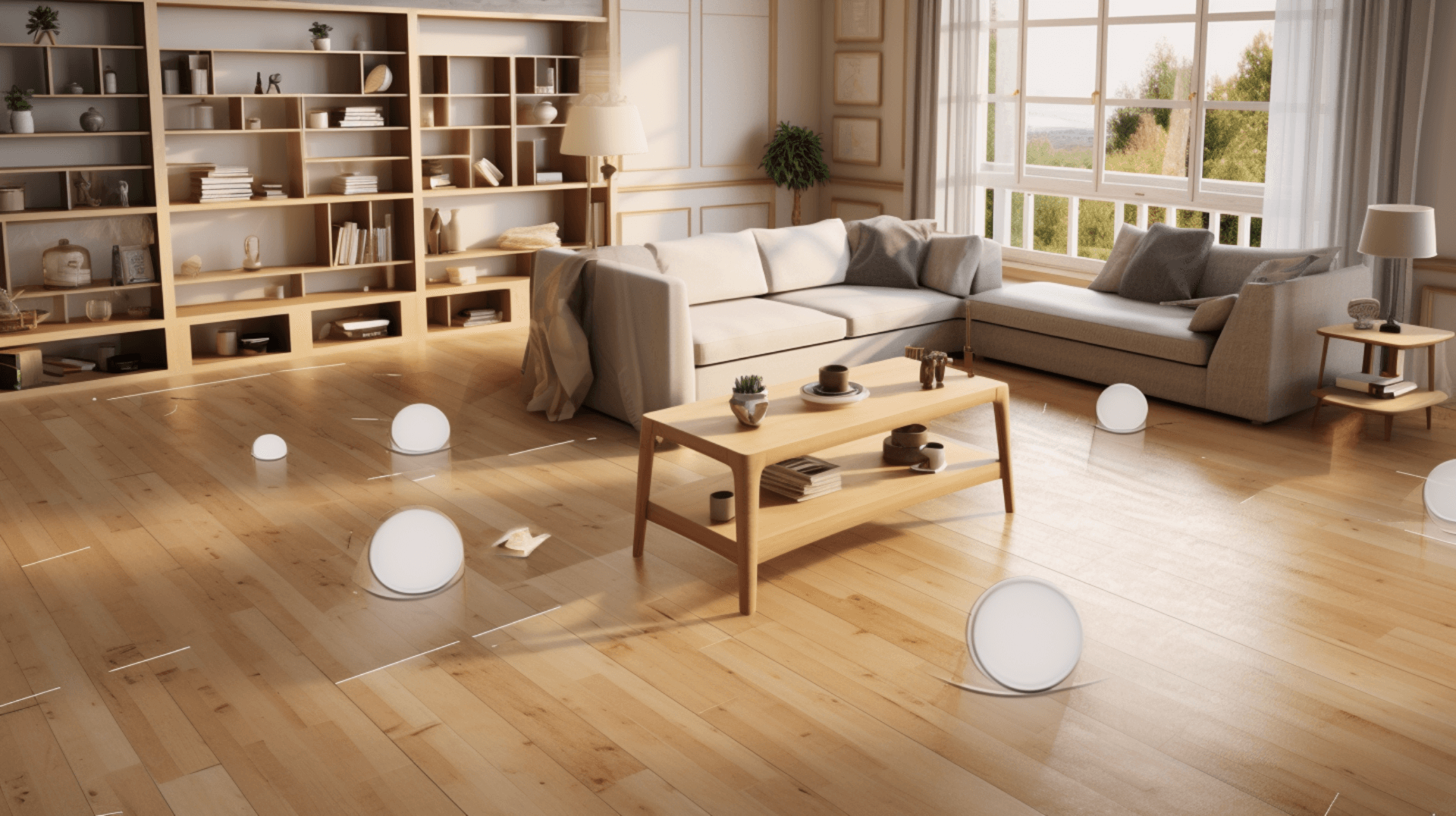Understanding the Importance of Protecting Wooden Floors
Wooden floors are a valuable and aesthetically pleasing addition to any home or business. they are susceptible to scratches, which can diminish their appeal and value. It is crucial to protect wooden floors from scratches to maintain their beauty and longevity.
There are several common causes of scratches on wooden floors, with moving furniture being one of the primary culprits. When furniture is moved, the legs can scrape against the floor, leaving unsightly marks. Pets can also contribute to scratches, as their claws can dig into the wood. Additionally, high heels can cause deep scratches when the sharp edges of the heel come into contact with the floor.
Scratches can have a significant impact on the aesthetic appeal and value of wooden floors. They can make the floor look dull and worn, detracting from its overall appearance. Furthermore, scratches can be challenging to repair, potentially leading to costly restoration efforts. Ultimately, scratches can reduce the value of the floor, making it less desirable to potential buyers or tenants.
To protect wooden floors from scratches, several preventive measures can be taken. Using furniture sliders or protective materials when moving furniture can minimize the risk of scratches. Trimming pets’ nails regularly can also help prevent scratches caused by their claws. Additionally, placing protective mats or rugs in high-traffic areas can provide an extra layer of defense against scratches.
Identifying the Types of Wooden Floors and Their Vulnerability to Scratches
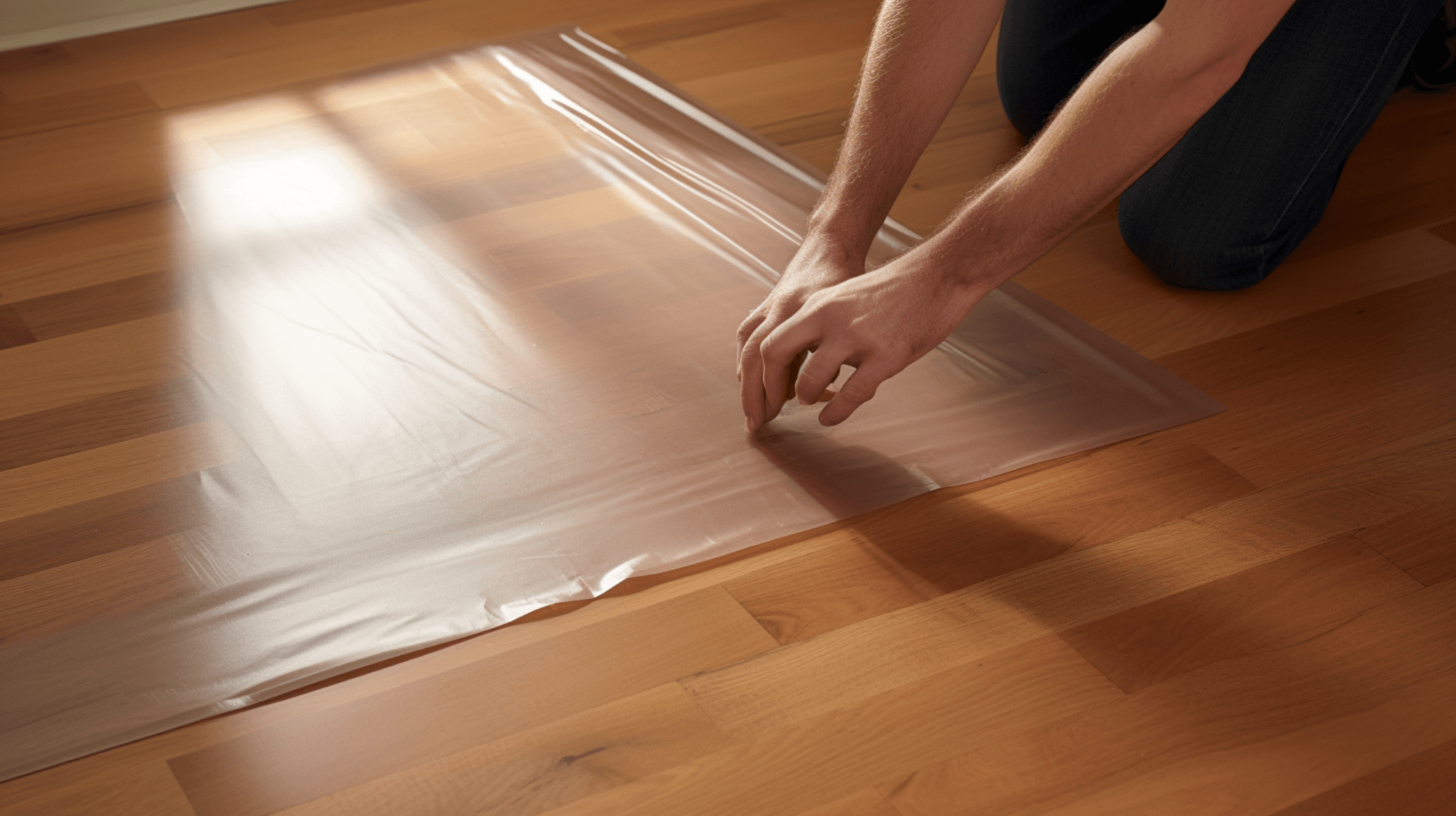
Wooden floors come in a variety of types, each with its own unique characteristics. Hardwood floors, such as oak, maple, and cherry, are the most common type of wooden floor. They are known for their durability and are generally more resistant to scratches compared to softwood floors. Softwood floors, like pine, are less durable and more susceptible to scratches. Laminate floors, although not made of real wood, are designed to mimic the appearance of wood and are generally more resistant to scratches compared to both hardwood and softwood floors.
The type of wood used in a wooden floor plays a significant role in its vulnerability to scratches. Hardwood floors, with their harder wood, are more difficult to scratch compared to softwood floors. it’s important to note that even hardwood floors can still be scratched, especially if not properly maintained. Laminate floors, with their thin layer of plastic, are also susceptible to scratches, although they are generally more resistant compared to hardwood and softwood floors.
When it comes to scratches from moving furniture, softwood floors are the most vulnerable. The softer wood is more easily scratched, and repairing the marks can be challenging. Hardwood floors, although less vulnerable than softwood floors, can still be scratched by furniture. Laminate floors, with their durable surface, are the least vulnerable to scratches caused by furniture movement.
The Role of Furniture in Causing Scratches on Wooden Floors
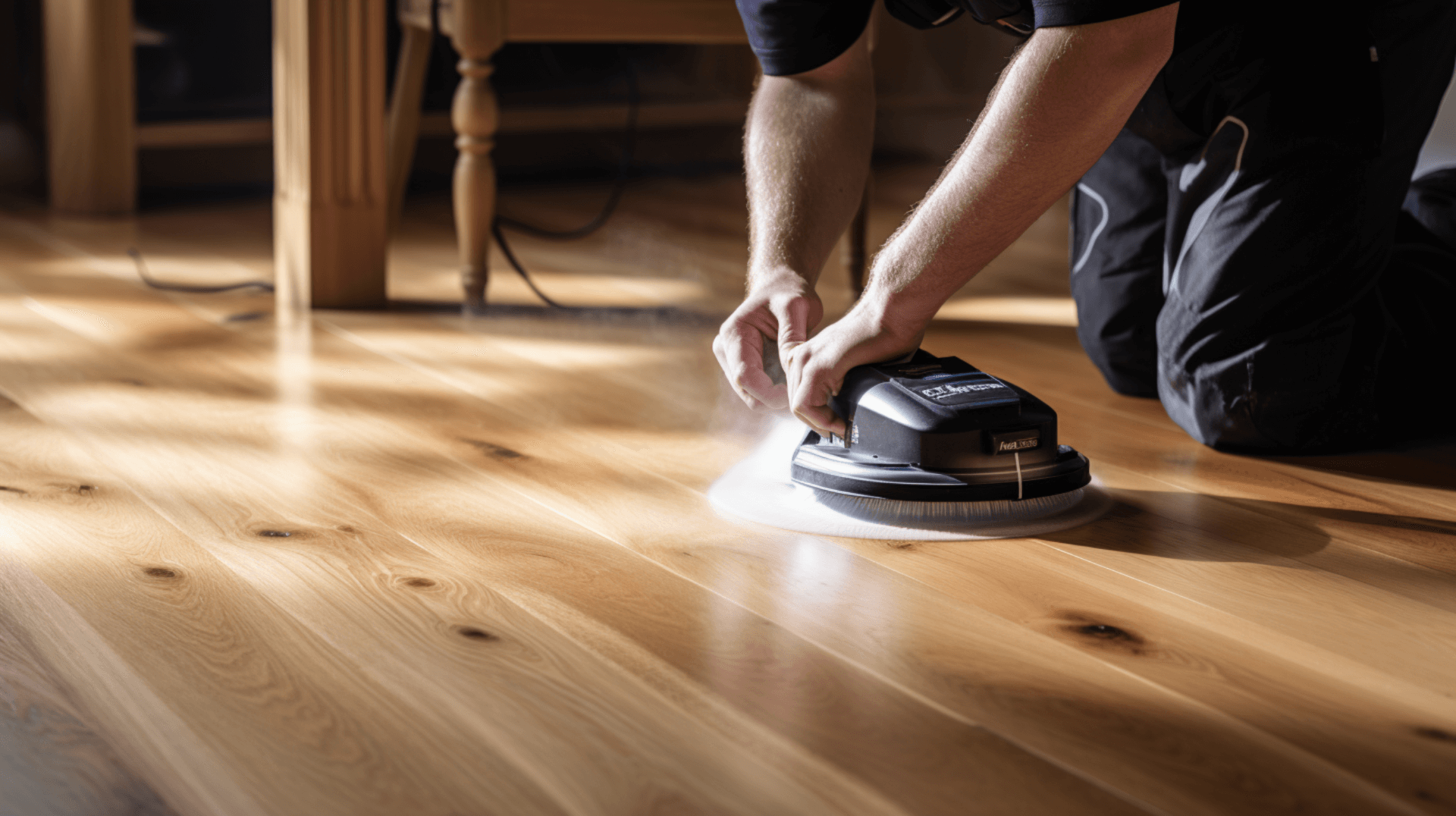
Furniture plays a crucial role in causing scratches on wooden floors. When furniture is moved, the legs can scrape against the floor, leaving unsightly marks. Furniture with sharp edges, such as metal furniture, is particularly prone to causing scratches when it comes into contact with the floor. Additionally, furniture with wheels can also contribute to scratches if not properly maintained.
The weight of the furniture is another factor to consider. Heavy furniture is more likely to cause scratches on wooden floors compared to lighter furniture. The weight of the furniture can cause the legs to dig into the floor, resulting in deep scratches. Furniture with sharp edges, such as metal furniture, poses a higher risk of scratches compared to furniture with rounded edges.
The placement and movement of furniture can significantly impact the condition of wooden floors. To minimize the risk of scratches, it is advisable to place furniture on protective mats or rugs. These provide a barrier between the furniture and the floor, reducing the chances of scratches. When moving furniture, it is important to do so slowly and carefully to avoid scraping the floor. Using furniture sliders or protective materials can further decrease the risk of scratches. Additionally, it is essential to consider the accessibility of furniture placement to facilitate easier movement and reduce the likelihood of accidental scratches.
Preparing Your Wooden Floor for Furniture Movement
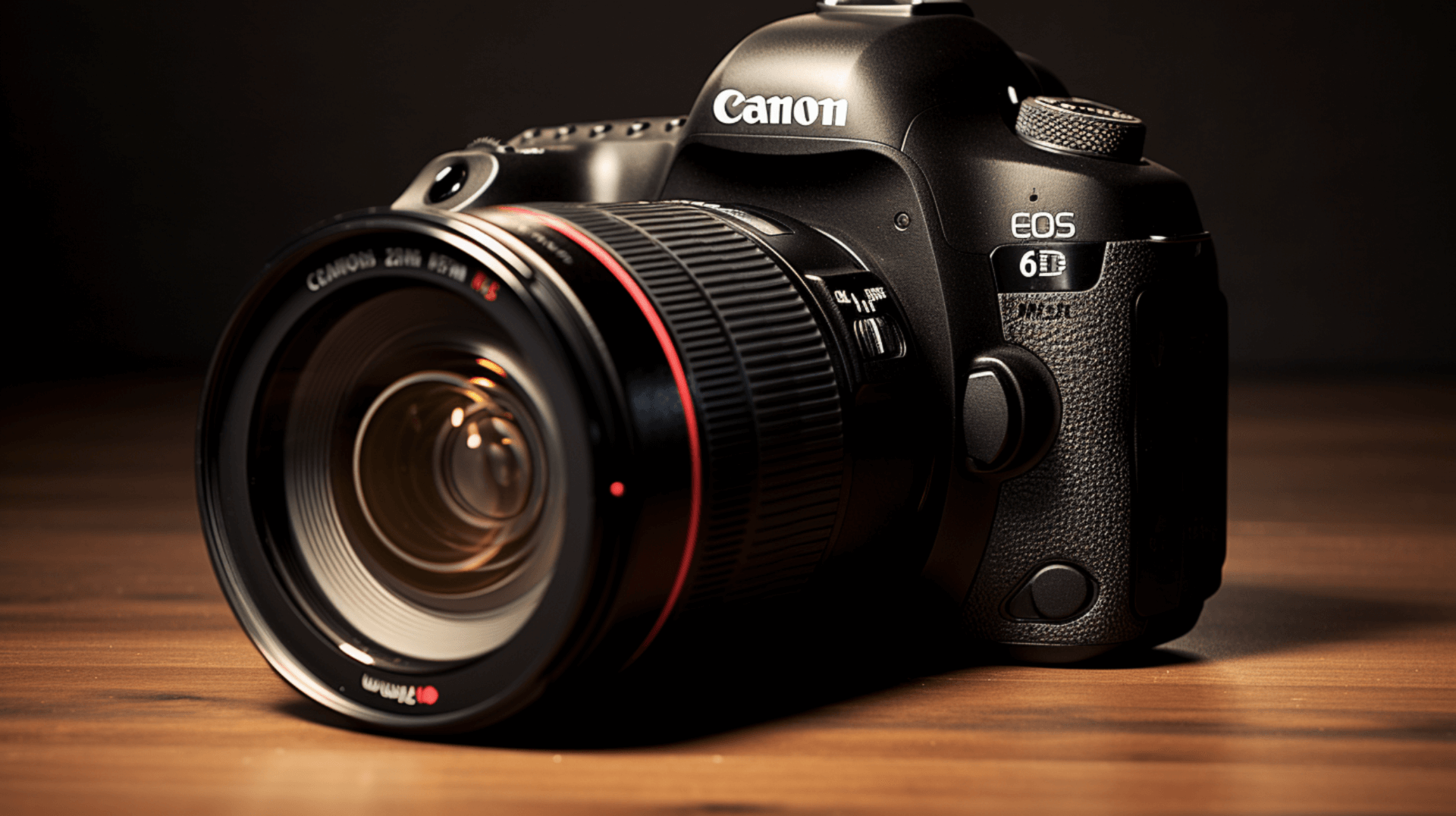
Preparing a wooden floor for furniture movement is essential for protecting it from scratches. The first step is to ensure the floor is clean and free of debris. Vacuuming or sweeping the floor regularly can help remove dirt and dust that can cause scratches. Additionally, it is important to check for any loose nails or screws that may be sticking out of the floor. These should be removed or hammered down to prevent them from causing scratches.
Cleaning and maintenance practices can also help in protecting the floor from scratches. Applying a protective finish to the floor can help reduce the risk of scratches. Additionally, it is important to check the condition of the furniture regularly. Loose screws, nails, or other sharp objects should be removed or tightened to prevent them from causing scratches.
When preparing a wooden floor for furniture movement, it is important to have the right materials and tools. Furniture sliders are essential for moving furniture without causing scratches. Additionally, protective mats or rugs should be placed in high-traffic areas to provide an extra layer of defense against scratches. A hammer and nails may also be needed to secure any loose nails or screws in the floor.
By following these steps and utilizing the appropriate materials and tools, homeowners and business owners can effectively prepare their wooden floors for furniture movement and protect them from unsightly scratches.
Choosing the Right Protective Measures for Your Wooden Floor
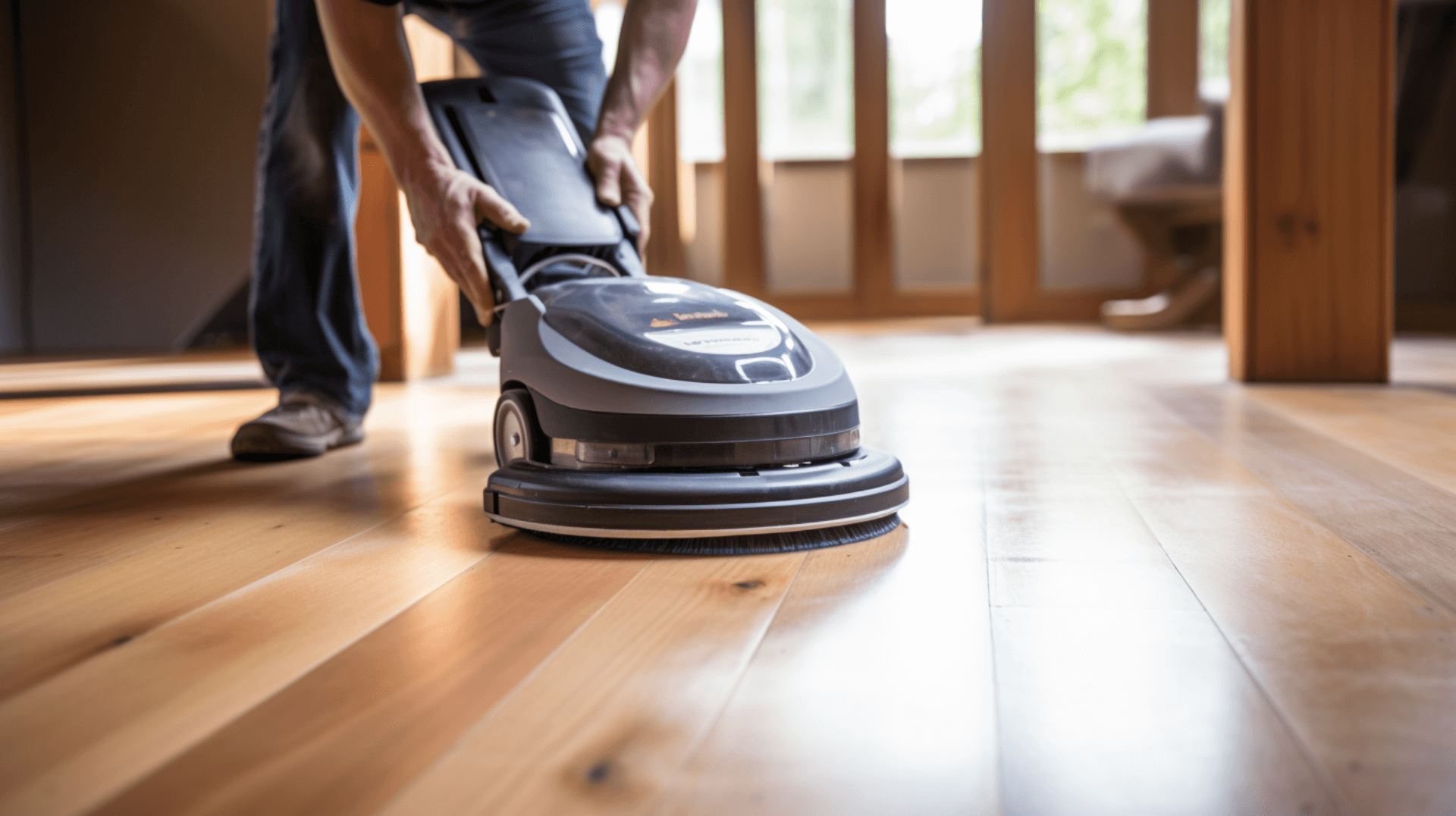
Choosing the right protective measures for a wooden floor is essential for protecting it from scratches. There are a variety of options available, each with its own advantages and disadvantages. Protective mats and rugs are a popular choice as they provide a barrier between the furniture and the floor, reducing the chances of scratches. it’s important to note that they can be difficult to clean and may need to be replaced regularly.
Furniture sliders are another effective option for protecting wooden floors. They allow furniture to be moved easily without causing scratches. they can be expensive and may need to be replaced regularly.
Applying a protective finish to the floor is also a viable option. This can help reduce the risk of scratches and make the floor easier to clean. it’s crucial to choose the right type of finish for the specific type of floor and furniture. Additionally, it’s important to consider the potential for water or condensate pipes in the floor, as these can increase the risk of water penetration and premature rot and decay.
When choosing the right protective measures, it’s essential to consider the type of floor, the type of furniture, and the specific needs of the space. Homeowners and business owners should weigh the advantages and disadvantages of each option and select the one that best suits their requirements. By taking proactive measures to protect their wooden floors, they can ensure their longevity and maintain their beauty for years to come. Visual inspection of the floor and consideration of potential water or condensate pipes should also be taken into account to prevent any potential damage.
Implementing Furniture Pads and Protectors for Wooden Floors

Furniture pads and protectors are an effective way to protect wooden floors from scratches. They provide a barrier between the furniture and the floor, reducing the chances of scratches. Felt pads are a popular choice as they are easy to install and provide a soft cushion between the furniture and the floor. Rubber pads are also an effective option as they provide a strong grip and are resistant to water and heat. Additionally, cork pads are a good choice as they are durable and provide a cushioning effect.
When installing furniture pads and protectors, it is important to ensure they are properly secured. This can be done by using adhesive or nails. Additionally, it is important to check the condition of the pads regularly and replace them when necessary. It is also important to consider any sources of dampness, water, or condensate pipes in the floor voids, as well as any evidence of fungal growth. Visual inspection of all floor voids for the presence of water or condensate pipes should be taken into account to prevent any potential damage. Clearing up any mess as soon as possible is also recommended.
By using the appropriate furniture pads and protectors, properly securing them, and considering potential sources of damage, homeowners and business owners can effectively prevent scratches and maintain the longevity and beauty of their wooden floors.
The Art of Moving Furniture Without Damaging Your Wooden Floor
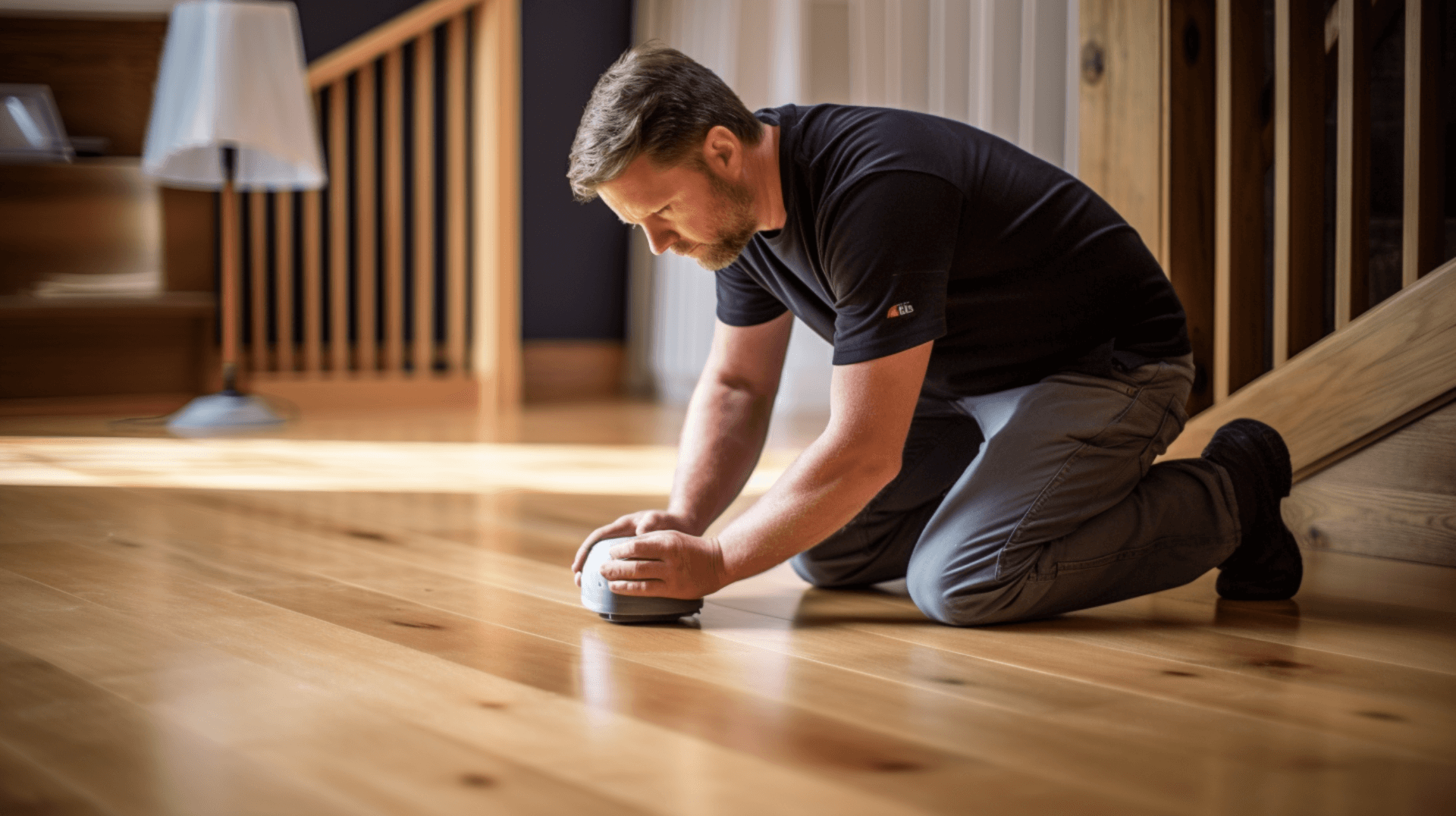
Moving furniture without damaging a wooden floor requires skill, patience, and attention to detail. In addition to the previous steps mentioned, it is important to consider the condition of the floor’s underlying structure. Timbers should be inspected for any signs of decay or damage, especially where they enter walls or are embedded in masonry. Any issues should be addressed before moving furniture to prevent further damage.
When it comes to moving furniture, using the right techniques and tools is crucial. Furniture sliders are still highly recommended as they allow for smooth and scratch-free movement. it is important to ensure that the sliders are appropriate for the weight and size of the furniture being moved. Using sliders that are too small or inadequate for the task can still result in scratches or damage to the floor.
Protective mats or rugs should be placed not only in high-traffic areas but also under heavy furniture pieces. These mats provide an extra layer of defense against scratches and distribute the weight of the furniture more evenly, reducing the risk of indentations or damage to the floor.
When moving heavy furniture, it is advisable to have additional assistance. Lifting the furniture rather than dragging it across the floor is essential to prevent scratches and other damage. It is also important to be mindful of the floor’s condition and any potential weak spots or areas of vulnerability.
By following these refined steps, using appropriate tools, and considering the floor’s underlying structure, homeowners and business owners can move furniture safely and without causing damage to their wooden floors. These measures will help preserve the floor’s integrity and maintain its aesthetic appeal for years to come.
Regular Maintenance and Care for Your Wooden Floor
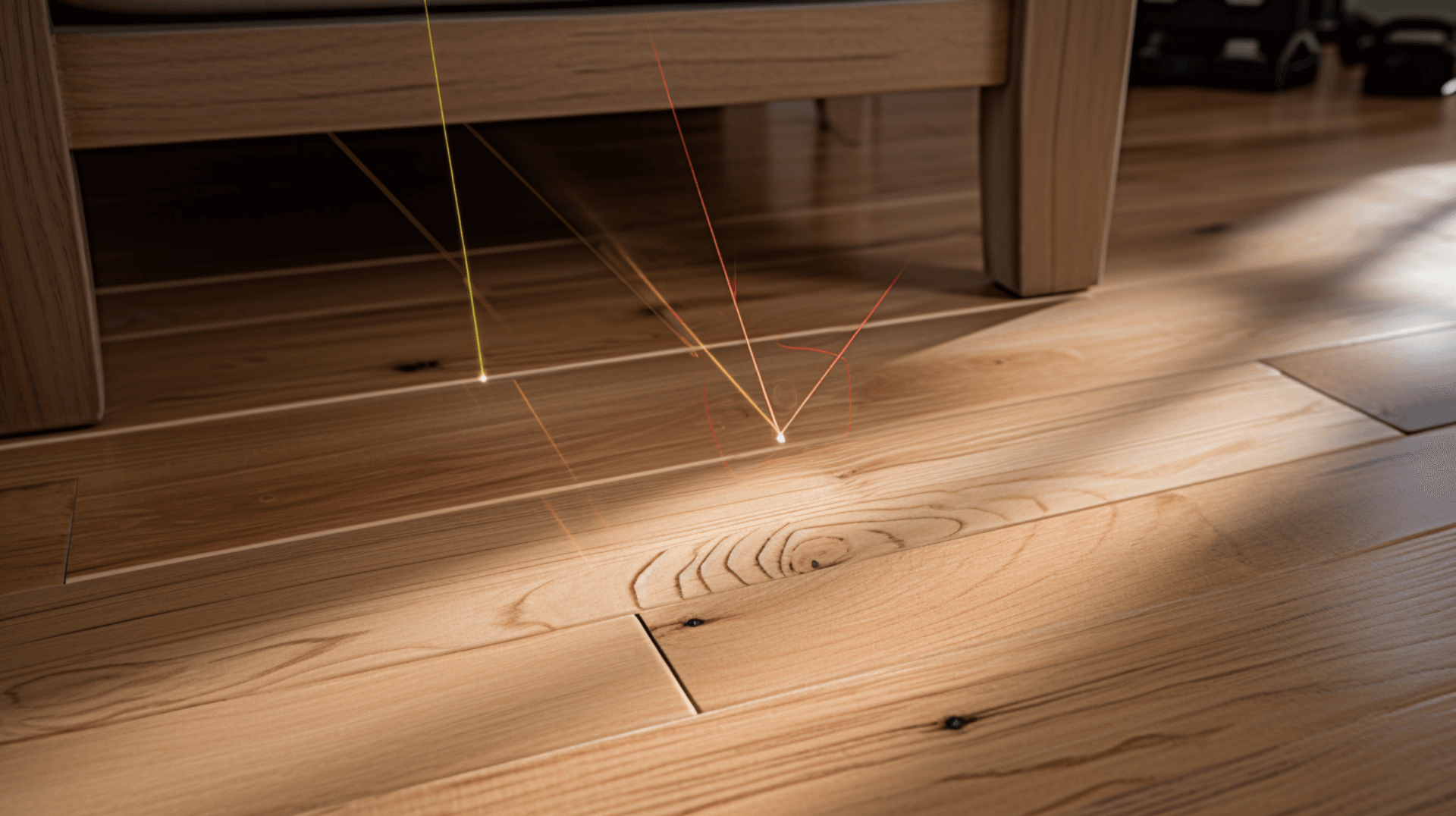
Regular maintenance and care are essential for keeping a wooden floor scratch-free. By regularly cleaning and maintaining the floor, homeowners and business owners can prevent dirt and debris from causing scratches. Regular cleaning also helps to remove any residue or buildup that can damage the floor’s finish.
When it comes to cleaning materials, it is important to use products that are specifically designed for wooden floors. Harsh chemicals and abrasive cleaners should be avoided as they can damage the floor’s finish and cause scratches. Additionally, it is important to avoid using too much water when cleaning as this can cause the wood to swell and warp.
It is also important to consider the frequency of cleaning and maintenance. Depending on the amount of traffic, the floor should be cleaned at least once a week. Additionally, it is important to inspect the floor regularly for any signs of damage or wear and tear. Any issues should be addressed immediately to prevent further damage. It is also important to check the condition of the floor’s underlying structure, including any signs of decay or damage, especially where they enter walls or are embedded in masonry. Additionally, it is important to check for any potential sources of dampness, water, or condensate pipes in the floor voids, as well as any evidence of fungal growth. Visual inspection of all floor voids for the presence of water or condensate pipes should be taken into account to prevent any potential damage.
By following these regular maintenance and care practices, homeowners and business owners can keep their wooden floors scratch-free and in excellent condition for years to come.
Repairing Scratches on Wooden Floors: When and How?

Scratches on wooden floors can be repaired using different methods and materials. For minor scratches, wax sticks are a popular choice as they are easy to use and provide a quick fix. it is important to note that wax sticks are only effective for minor scratches and may not be suitable for deeper ones. In such cases, using a wood filler is recommended. Wood fillers can be applied with a putty knife and sanded down once they have dried, resulting in a smooth surface.
In addition to the repair methods, it is crucial to consider the condition of the floor’s underlying structure. Inspecting for signs of decay or damage, especially where the floor enters walls or is embedded in masonry, is important. It is also essential to check for potential sources of dampness, water, or condensate pipes in the floor voids, as well as any evidence of fungal growth. Visual inspection of all floor voids should be conducted to prevent any further damage.
By understanding when to repair scratches, utilizing the appropriate methods and materials, and considering the condition of the floor’s underlying structure, homeowners and business owners can effectively restore their scratched wooden floors and maintain their aesthetic appeal and longevity.
Professional Help for Wooden Floor Protection: GJP Floor Sanding
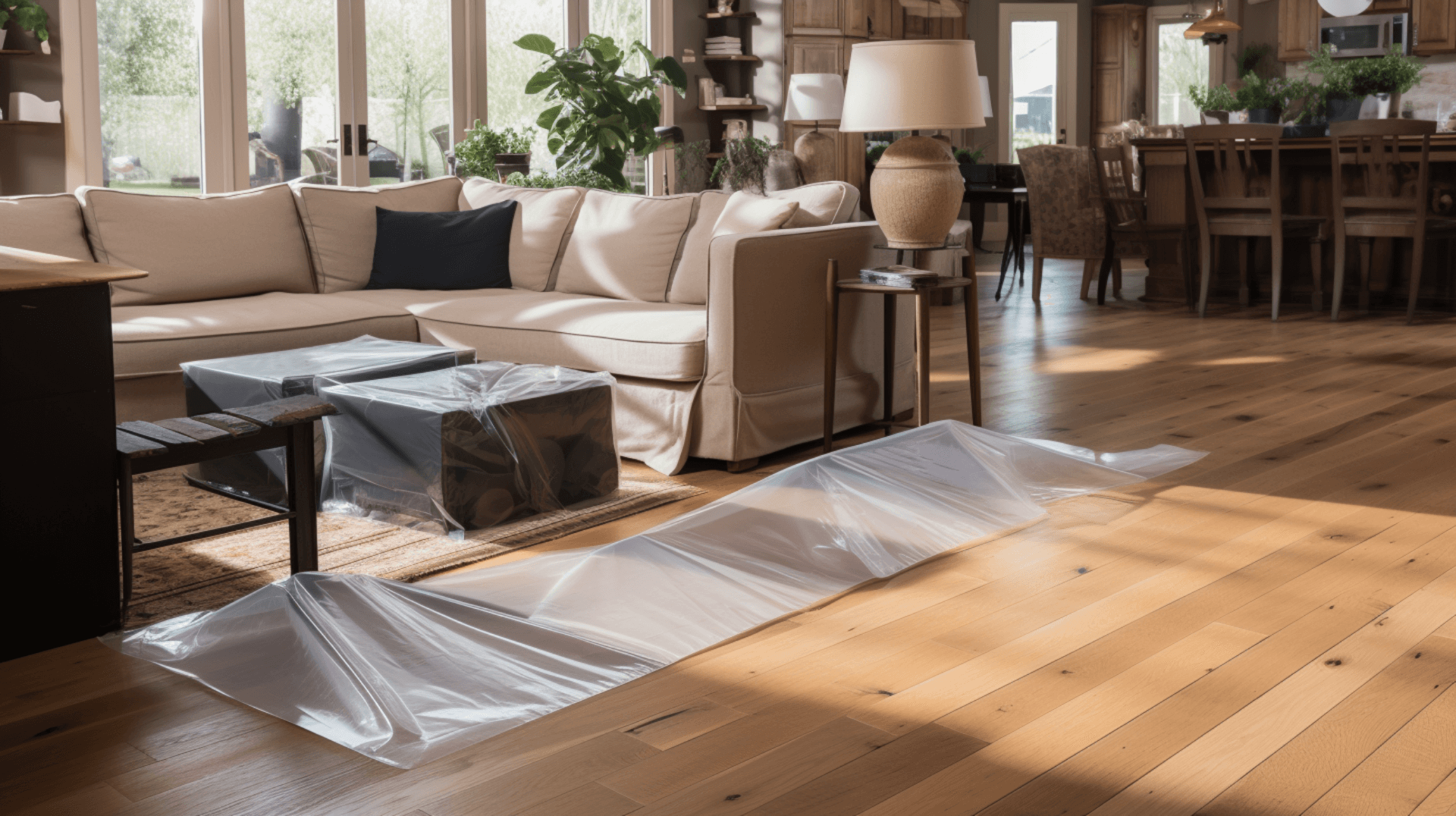
Professional services like GJP Floor Sanding can help homeowners and business owners protect our wooden floors. GJP Floor Sanding offers a range of services for wooden floor protection and maintenance, including floor sanding, staining, sealing, and repairs.
Floor sanding is an effective way to remove scratches and restore the floor’s original finish. GJP Floor Sanding uses the latest dust-free sanding technology to ensure a clean and efficient process. The team also offers a range of staining and sealing options to protect the floor and enhance its aesthetic appeal. In addition to sanding and staining, GJP Floor Sanding also offers repairs for damaged floors. The team is experienced in dealing with all types of flooring issues, from minor scratches to more serious damage.
GJP Floor Sanding can also provide additional services to improve the overall condition and performance of wooden floors. We can verify the address for installation to ensure accurate and efficient service. We also offer advice on preventive measures, such as using shoe protectors/covers when entering the property and putting down dust sheets where required. Additionally, we can help improve the thermal performance of a suspended timber floor by adding extra insulation to comply with relevant building regulations.
With our expertise and comprehensive range of services, GJP Floor Sanding is the trusted choice for professional wooden floor protection and maintenance. Homeowners and business owners can rely on our knowledge and skill to keep our wooden floors in excellent condition. We also provide advice on how to maintain the floor and prevent further damage, ensuring compliance with relevant building regulations for thermal performance.
Expert Advice: Tips from GJP Floor Sanding Professionals

GJP Floor Sanding professionals have a wealth of experience in protecting wooden floors from scratches. We advise homeowners and business owners to take preventive measures, such as using shoe protectors/covers when entering the property and putting down dust sheets where required. Additionally, we recommend regular cleaning and maintenance to remove dirt and debris and prevent scratches. It is also important to ensure that safe systems of work are in place, such as isolation of services and mains supply, checking the size of the entrance point, and provision of ventilation. Testing the air, using the right tools and equipment, and wearing the appropriate personal protective equipment are also crucial for maintaining the longevity of wooden floors.
GJP Floor Sanding professionals can provide expert advice on the best preventive measures to protect wooden floors from scratches. We can guide homeowners and business owners on the proper use of furniture with protective pads, the selection of mats or rugs without rubber or PVC backing, and the use of vacuum cleaners without beater bars. We can also offer recommendations on the most effective methods and materials for repairing scratches, depending on our depth and severity.
Regular consultation with professionals like GJP Floor Sanding is highly beneficial for maintaining the longevity of wooden floors. We can conduct thorough inspections to identify any underlying issues or potential sources of damage, such as dampness or fungal growth. By addressing these issues promptly, homeowners and business owners can prevent further damage and ensure the long-term durability of our wooden floors. Additionally, professionals can provide guidance on proper cleaning techniques, suitable cleaning products, and the frequency of maintenance to keep the floors in optimal condition.
Customer care is also important when protecting wooden floors. GJP Floor Sanding can provide advice on the types of materials to use, ensuring material conformity and compliance with building regulations. We can also assess the building’s suitability and identify any potential risks. Additionally, we can provide guidance on the best installation methods, such as options for insulating a suspended timber floor, methods of applying roll or batt insulation, and insulating using spray foam. We can also advise on services and damp-proof courses, water pipes, gas lines, and other potential sources of damage to the wooden floor.
Contact Us: Get in Touch with GJP Floor Sanding for Your Wooden Floor Needs

To get in touch with GJP Floor Sanding for your wooden floor needs, you can contact us by calling our toll-free number 02036 978 431 or our local number 02036 978 431. Alternatively, you can visit our website at www.nwfa.org for more information.
When reaching out for a consultation or service, it is important to provide specific details about your wooden floor. This includes information about the type of flooring, the size of the area that needs attention, and the desired outcome. Additionally, it is helpful to provide information about the condition of the floor, including any issues related to wiring, flues, underfloor heating, damp-proof courses, condensation, and any potential sources of damage such as water pipes and gas lines. Providing photos of the floor and any specific areas of concern can also assist the team in assessing the situation and identifying any potential risks, such as dampness or fungal growth.
GJP Floor Sanding is the trusted choice for professional wooden floor protection and maintenance. With our expertise and comprehensive range of services, we can provide expert advice on the best preventive measures to protect wooden floors from scratches and recommend the most effective methods and materials for repairing scratches. We are experienced in dealing with all types of flooring issues, from minor scratches to more serious damage. By contacting GJP Floor Sanding, homeowners and business owners can rely on our knowledge and skill to keep our wooden floors in excellent condition.
